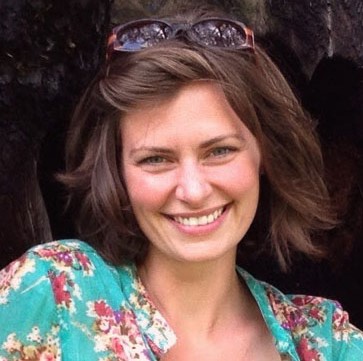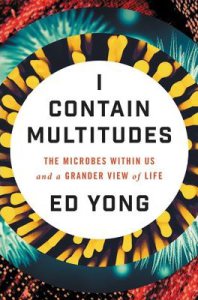 My name is Sara Grady, and I’m a former engineer with the heart of a poet. As a Road Scholar with the Illinois Humanities Council, I travel the state talking about how stories, myths, and words influence our culture and communities. I love language, breathe books, and teach science writing at Northwestern University. I wish I had a green thumb.
My name is Sara Grady, and I’m a former engineer with the heart of a poet. As a Road Scholar with the Illinois Humanities Council, I travel the state talking about how stories, myths, and words influence our culture and communities. I love language, breathe books, and teach science writing at Northwestern University. I wish I had a green thumb.
1) The Invention of Nature by Andrea Wulf (2015)
You’ve probably never heard of Alexander von Humbolt, and neither had I. But his prolific, revolutionary nature writing and scientific explorations inspired a 19th century whos-who, from Charles Darwin and Thomas Jefferson to Ralph Waldo Emerson and John Muir. Wulf’s detailed biography reads like a novel and quickens the senses like the very best nature writing can. Rightfully winning a glut of prizes this year, it is a delightful read — and now I truly appreciate the namesake of one of my favorite Chicago parks.
2) I Contain Multitudes by Ed Yong (2016)
Yong’s friendly, approachable prose and penchant for charming metaphors makes reading about bacteria more fun than you can probably imagine. The title, taken from Walt Whitman, is the beginning of a marvelous journey into the surprising, confounding, and complex ecosystems within all of us.
 3) A Sense of the Mysterious by Alan Lightman (2005)
3) A Sense of the Mysterious by Alan Lightman (2005)
Lightman is the only person to be faculty in both physics and creative writing at MIT. At his best, he echoes the beauty and simplicity of Richard Feynman, and here, short essays exploring the writing practice itself sit alongside biographies of scientists he admires.
4) On Beauty by Zadie Smith (2005)
This backlist title felt particularly apt this fall. Inspired by EM Forester’s Howard’s End, it describes the lives of two academic families and those caught in their orbit in a cushy, university town/suburb; pounding out the drama of small lives and high politics in exquisite detail.
5) An American Year by Hal Borland (1946)
The North American landscape is both alive and comforting in Borland’s folksy farm-missive style. I discovered this vintage title among the stacks of the university library last winter and each month looked forward to savoring the corresponding chapter. Written as a newspaper column during WWII, the compilation reads like a love letter to the land, scraping the hoarfrost and counting the daffodils with equal-tempered glee.
